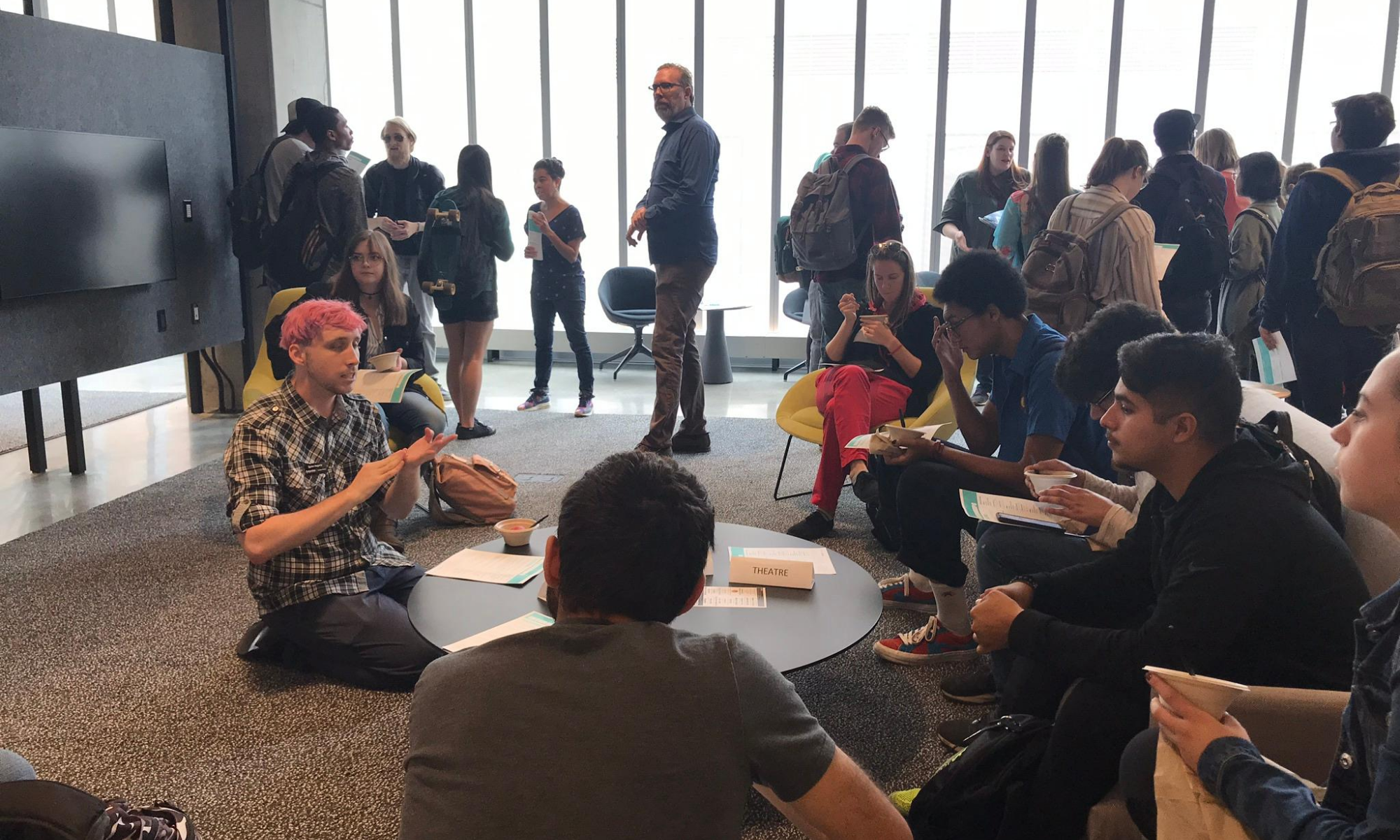Resume Support

Whether you are applying for an internship, part-time job, or full-time job polishing up your resume will be one of your first steps. The Career Center is here to help you create a document that shows off your skills. Here are a few ways we can assist you in developing your resume:
- Read our Resume Guide for tips on getting started or polishing up
- Log on to Handshake to view resume samples and suggested action verbs
- Meet with a Peer Coach
Here is how it should come together:
-
Create a Master Resume
Start by making a complete list of experiences. Focus on the past four years if you are a current student, the past ten if you took time off to work. Use the categories below to organize your information. Required sections are noted with an *, everything else is optional.
Contact Information* Objective/Summary Education*
Work Experience* Volunteer Experience Professional Affiliations
Exhibitions Performances Publications
Skills
-
Know Your Audience
Resume expectations vary depending on what you want to do and where you want to work. Gather information about employer expectations for content, format, and in-demand skills and experience. Sometimes there are very specific expectations (i.e. an actor’s resume), but often you have the flexibility to arrange your resume in the way that you feel best reflects your experience.
-
Create Targeted Resumes
It is ok (and expected) to have several versions of your resume. Your master resume may take up three pages, or you may struggle to fill a page. The ideal resume is one page in length- no more, no less. So the way you cut or expand information, and how you arrange content depends on what the industry expects AND what you want to emphasize.
-
Know Your Value
A strong resume goes beyond listing your work history- it should show off your strengths and uniqueness. Start with an honest assessment of what makes you worth hiring- and make sure your resume reflects this. Choose your 3 or 4 top skills- communication, organization, expert Photoshop abilities, for example. This will become your message. You may explicitly state your message in an "Objective" or "Summary", but more importantly, your message will help you decide what to include, what to cut and how to arrange your resume.
-
Make It Look Good
Your resume has to reflect your experience, but it is also a branding opportunity. If you have a portfolio, website or business card, be sure they all fit together visually. If you are in a portfolio-based field, be sure that your resume is designed to match your type treatment and color scheme.
-
Think Outside the Page
A print resume is no longer the center of a job search. Online resumes and portfolios are standard at this point. Embed links in your PDF or website so you can link to companies you have worked for or examples of your work.
-
Describing Your Work
Write job descriptions carefully so they paint a clear and accurate picture of your role on the job. Go beyond responsibilities to think about what you contributed.
Use bullets to make descriptions easy to read.
Write in phrases, not sentences.
Start with strong, action verbs.
Provide context. Try to include the who, what, why, and how often for each duty. Who were you calling? What were you copying? Why were you filing papers?
Think about why your job was necessary for the company to operate, what you were complimented or praised for, and what you were proudest of on the job.
-
Format and Design
The packaging of your resume is important. If you are in a visual field- graphic design, art direction, photography- your resume will also be a design sample. It needs to be just one part of your brand.
There are a few general rules for anyone thinking about resume format and design:
Font size should not go smaller than 10 or larger than 12
Avoid cursive or other hard to read (“display”) fonts
Bold, underlining, and indents are all good ways to separate content. But centering your content is not ideal and can make it harder to read.
Keep it simple. Good design adds to a resume and bad design definitely detracts.
Avoid background images or large, distracting design.
Color is ok, as long as you stick to no more than two colors that print well.
Know Illustrator/In Design/Photoshop? Use them! If you can use them well, don’t feel tied to a Word document.
Templates: don’t use them. This is a good way to guarantee that your resume looks just like someone else’s! They also make it hard to move content around, and we definitely want content to be mobile. You can do just as well on your own.
-
Peer Coach Zoom Appointments
Have a Peer Coach look over your resume (via Zoom) without making an appointment, Monday – Friday, 10-4:30pm.
To connect:
Call: 312-369-7280
Email: careercenter@colum.edu
Chat with us on our website: colum.edu/careercenter

